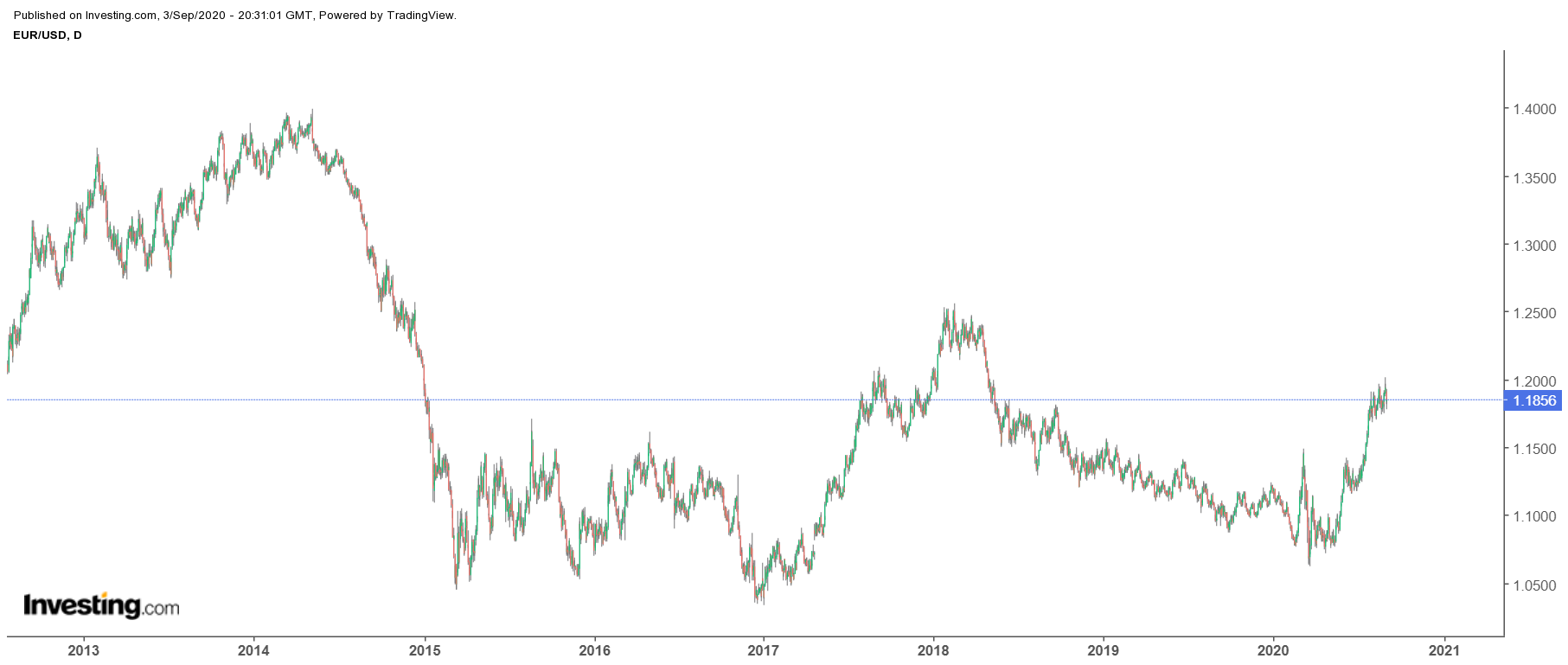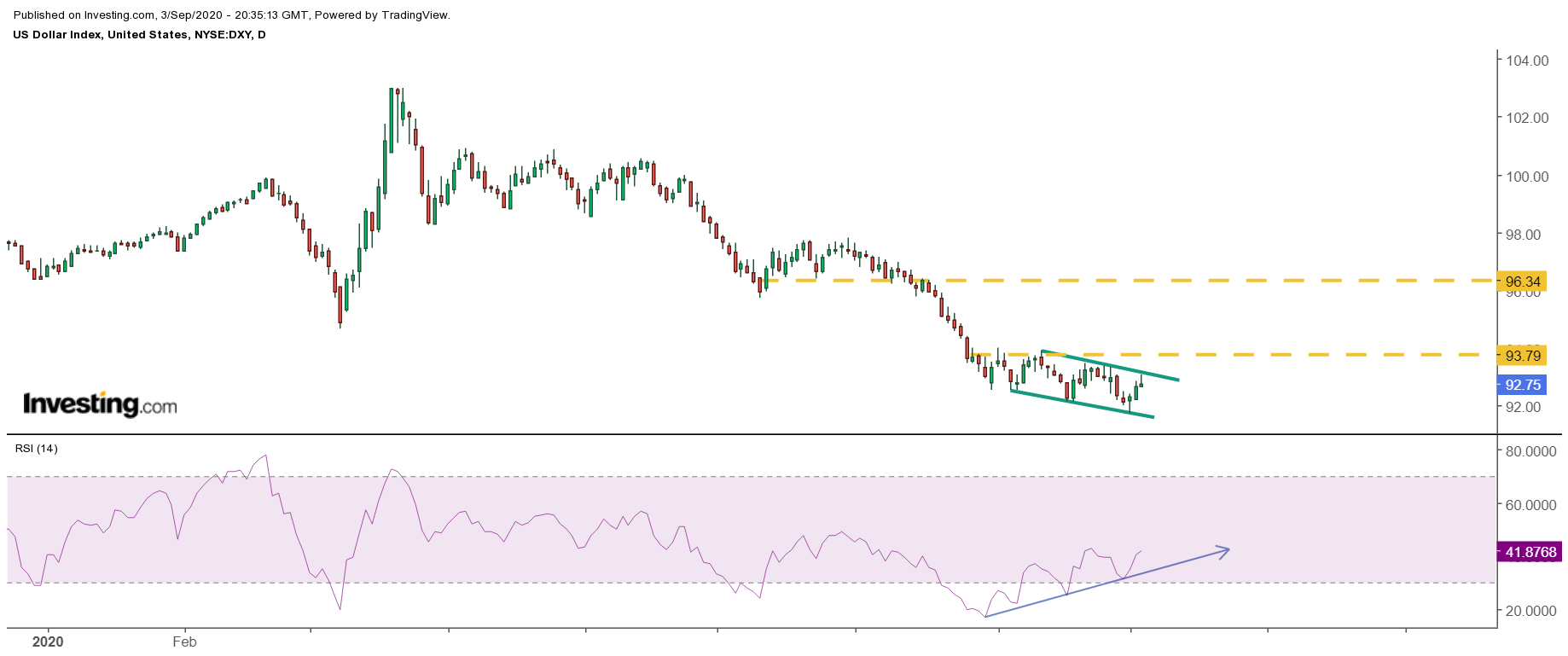This article was written exclusively for Investing.com
The Dollar Index has declined sharply in recent weeks, as US government spending soars and rates on the 10-year US Treasury sink. It has resulted in the euro surging to as high as 1.20 to the dollar. Since peaking on March 19, the Dollar Index has slumped by nearly 10%. However, those significant declines may be over.
The big shot across the bow may have come from the ECB's chief economist Philip Lane, who noted that the exchange rate of the euro matters to the health of the eurozone. When the ECB instituted a negative interest rate policy in 2015 and 2016 under Mario Draghi, it resulted in the single currency weakening versus the dollar to nearly 1.05, rallying briefly to around 1.20 to the dollar in 2018, and then sinking again.
However, it was those aggressive monetary policies that suppressed and kept the euro low versus the dollar and close to parity.

More Aggressive Monetary Policy
Now, Draghi is gone, and the euro has surged to around 1.20 to the dollar as the Federal Reserve has gotten very aggressive with monetary policy to fight off deflationary forces from the coronavirus-induced recession. If the ECB is intent on reducing the exchange rate, it means that more aggressive monetary policy is likely to come, and that would mean the dollar is likely to strengthen as a result. A weaker euro helps to boost inflation and growth across the eurozone, while also helping to make goods more competitive abroad, assisting the eurozone's export economies.
A Bottoming Pattern
If a more aggressive monetary policy does come from the ECB, then it is likely to result in a longer-term move higher in the US dollar. The technical chart even suggests that a reversal may be in the works.
The DXY has seen its relative strength index fall well below oversold levels at 30, all the way down to 18. Now that RSI is starting to rise and has been steadily trending higher.
The rising RSI, while the value of the index has been trending lower in a trading channel, creates a bullish divergence and indicates a dollar reversal higher may be on the way. It suggests that momentum in the Dollar Index is shifting from a bearish to bullish trend.
Should the Dollar Index rise above 93.75, it is likely to result in a further push higher to around 96. It could be the start of a longer-term reversal higher.
A longer-term surge in the dollar would create potential issues, especially for risk assets and assets linked to inflation.

Inflation Linked Assets Could Struggle
Gold would be one such asset class that could suffer significantly after its 32.7% rally since the March lows. The precious metal’s big advance has come as some investors have sought its safety as a store of value and as a hedge against inflation pressure. With the dollar rising, it would damage the prospect for inflation surging and reduce the need to hold gold as a store of value.
Should the dollar’s bottom be in place, it will likely come at the hands of the central banks, such as the ECB taking on more aggressive monetary policy. Just how far the dollar can rally will largely be dependent on how far that monetary policy is pushed and more importantly how the markets respond to it.
